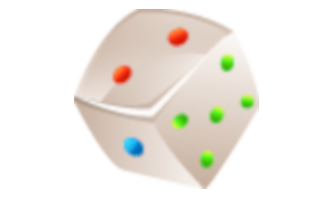Genetics - Study of Heredity
Life Science - Middle School
Genetics: The Study of Heredity
Multimedia Lesson

How Traits Are Inherited
Presentation

Gregor Mendel
Presentation

Mendel's Experiments
Presentation

Dominant and Recessive
Presentation

Using a Punnett Square
Presentation

Phenotypes and Genotypes
Presentation

Making a Pedigree
Presentation

Codominance
Presentation

Mendel's Pea Plant Experiments
Virtual Lab

Understanding a Punnett Square
Interactive

Genetics - Study of Heredity
Study Guide

Genetics - Study of Heredity
Quiz

Genetics: The Study of Heredity
Quiz

Genetics - Study of Heredity
Flash Cards

Genetics: The Study of Heredity
Flash Cards

Genetics - Study of Heredity
Worksheet

Genetics: The Study of Heredity
Worksheet

Genetics - Study of Heredity
Game

Genetics: The Study of Heredity
Game

Genetics - Study of Heredity
Vocabulary List

Genetics: The Study of Heredity
Vocabulary List

How Trait are Inherited
Flip Chart

Chromosomes and Karyotypes
Flip Chart

Gregor Mendel
Flip Chart

Mendel’s Experiments
Flip Chart

Dominant and Recessive Traits
Flip Chart

Punnett Squares
Flip Chart

Phenotypes and Genotypes
Flip Chart

Codominance
Flip Chart

Making a Pedigree
Flip Chart

Genetics Vocabulary Review
Flip Chart

Genetics: Study of Heredity
Flip Chart

Genetics - The Study of Heredity
Flip Chart

Genes and Heredity
Flip Chart

Modern Genetics
Flip Chart

Modern Genetics
Flip Chart

Chromosomes
Flip Chart

DNA Replication
Flip Chart

Chromosomes
Flip Chart

Genes
Flip Chart

DNA
Flip Chart

From DNA to Protein
Flip Chart

DNA Transcription: DNA to RNA
Flip Chart

Translation: RNA to Protein
Flip Chart

The Genetic Code
Flip Chart

DNA/RNA Structure
Flip Chart

Mutations
Flip Chart

Chromosomes, Genes and DNA Vocabulary Review
Flip Chart

Study Guide Genetics - Study of Heredity
❮
1
/
4
❯
GENETICS: THE STUDY OF HEREDITY Mendel’s Work Gregor Mendel was a high school teacher from Austria who developed the foundation of genetics. He worked with pea plants in the monastery where he lived in the 17th century. Without his work the study of heredity would not be where it is today. Gregor wondered how and why pea plants had different physical characteristics, otherwise known as traits. Some of the pea plants grew short while others grew tall, and some had green pods while others had yellow pods. He began to notice that some of the pea plants had similar traits of their parents. He hypothesized that the parents passed down traits to their offspring, which is called heredity. It was this work that laid the foundation of genetics. The P Generation A purebred is an offspring with the same form of a trait as its parent. This is achieved by letting plants with a certain trait reproduce for many generations. Mendel crossed a purebred short stem pea plant with a purebred tall stem plant. He called it the P generation or the parent generation. Mendel called the first generation the F1 generation. The F stands for the filial, or ‘son’ in Latin, generation and the 1 stands for which generation it is from. All of the offspring in the F1 generation were tall. Mendel allowed the offspring (F1 plants) to grow and reproduce. The results of the F2 generation were a mix of tall and short plants. Dominant and Recessive Alleles From Mendel’s work on peas, he was able to hypothesize that the traits existed in pairs and that each parent contributed one trait to the offspring. © Copyright NewPath Learning. All Rights Reserved. Permission is granted for the purchaser to print copies for non-commercial educational purposes only. Visit us at www.NewPathLearning.com.
What is an Allele? Mendel reasoned further that one trait can be masked by another trait in the parents. For example, the purebred parents for green and yellow pod colors F1 generation will all have a green pod. So the yellow pod color will not show up at all in the F1 generation. In the F2 generation the yellow pod color comes back at a ratio of about 3:1. An allele is the different forms of a particular trait or gene. The gene that controls the pod color has one allele for green and another allele for yellow. Each generation of pea plants inherits one allele from each parent, a total of 2 alleles, for each physical characteristic. A dominant allele is the allele that will always show up in an organism if the allele is present in the organism. So in the pea pod example, the green allele is the dominant allele. A recessive allele is the allele that will be masked if the dominant allele is present. The only possible way that the recessive allele will show up is if the dominant allele is not present at all. Lesson Checkpoint: What is a dominant allele? Hybrids A hybrid is the F1 generation that has two different forms of an allele. © Copyright NewPath Learning. All Rights Reserved. Permission is granted for the purchaser to print copies for non-commercial educational purposes only. Visit us at www.NewPathLearning.com.
Probability and Heredity Probability is the chance that a certain event will occur. If you were to flip a coin into the air and let it hit the ground, which side would it land on? There are two different possibilities, heads or tails. It is equally probable that the coin will land on the heads side as it is that it will land on the tails side. This translates to… the probability of a coin landing on heads or tails is 1 in 2. There is a 50% chance that the coin will land on the heads side and there is a 50% chance that it will land on the tails side totaling 100%. Mendel’s probability illustrated that probability can be used to predict an organisms traits. Lesson Checkpoint: What is the probability of a coin landing on tails? Punnett Squares A Punnett Square is a tool that scientists use to predict the probability of an organism’s genetic makeup. They show the different combinations of alleles that are possible with a particular trait and show the ratio’s of those traits. Probability of this Punnett Square: GG = 25%, Gg = 50%, and gg = 25% Phenotypes and Genotypes There are four important terms that geneticists use on regular basis and they are phenotype, genotype, homozygous, and heterozygous. • A phenotype is the physical appearance of a particular organism. A pea plant can have one of two different physical appearances for pod color: either green or yellow. © Copyright NewPath Learning. All Rights Reserved. Permission is granted for the purchaser to print copies for non-commercial educational purposes only. Visit us at www.NewPathLearning.com.
• The genotype is the genetic make-up of a particular organism. An organism has two separate alleles for a trait. The allele combination is the genotype. • A homozygous organism is one that has two of the same alleles for a particular trait. A pea plant with the alleles GG has a green pod while a pea plant with the alleles gg has a yellow pod. Both are said to be homozygous (Homozygous = the same). • A heterozygous organism is one that has two different alleles for a particular trait. A pea plant with the alleles Gg has a green pod in every circumstance and are considered to be heterozygous (heterozygous = different). Chromosomes and Inheritance A chromosome is a strand of DNA that contains genes which define the traits of the individual. Chromosomes are passed on from parents to their offspring through the sex (eggs or sperm). These sex cells contain ½ of the total number of chromosomes as do the other cells that make up the rest of the body. Two sex cells come together to make one new cell of the offspring. For example, each human body cell has a total of 46 chromosomes. Human sex cells have 23 chromosomes. When the egg (23) from the female, comes together with a sperm (23) from the male, the result is a cell with a total of 46 chromosomes which has a different combination of chromosomes from both of the parents. The Chromosome Theory of Inheritance These concepts led to the chromosome theory of inheritance that states that genes are carried via chromosomes from the parents to their offspring. Each sex cell contains exactly half of each parent’s total number of chromosomes through a process known as meiosis. All organisms have a specific number of chromosomes that are different according to their particular species. Each chromosome is made up of thousands of different genes and on those chromosomes are genes that have two alleles on opposite chromatid that can either be the same or different from one another. © Copyright NewPath Learning. All Rights Reserved. Permission is granted for the purchaser to print copies for non-commercial educational purposes only. Visit us at www.NewPathLearning.com.
Table Of Contents: Genetics: The Study of Heredity
1. How Traits Are Inherited
2.1. What Is Heredity?
Heredity is the passing of traits or characteristics from one generation to the next.
2.2. Fertilization
When an egg and sperm come together at fertilization, the embryo receives a copy of each parent's chromosomes.
2.3. Chromosomes Inherited from Each Parent
Humans have 46 chromosomes that are present in 23 pairs. One chromosome in each pair is inherited from the mother, and the other from the father.
2.4. Two Copies of Each Gene
The inherited genes on these chromosomes contain DNA sequences that are related to particular traits. A person inherits two copies of each gene.
2.5. Alternate Gene Forms
Genes exist in alternate forms called alleles. For example, the gene that determines eyebrow shape has two alleles—one codes for bushy eyebrows and the other fine eyebrows.
2.6. Homozygous and Heterozygous Alleles
A person can inherit two of the same alleles, called homozygous. Or a person can inherit two different alleles, called heterozygous.
2. Gregor Mendel
3.1. Significance of Mendel's Experiments
In the mid 1800s Gregor Mendel performed pea plant experiments to learn about heredity and traits. These experiments laid a foundation for our modern understanding of genetics.
3.2. Why Use the Pea Plant?
Mendel used the garden pea plant for breeding experiments because it had easy to recognize traits and reproduced quickly. The pea plant could also produce offspring using self-pollination or cross-pollination.
3.3. Two Forms of Pea Plant Characteristics
Mendel initially focused on the inheritance of single characteristics that only occurred in two different forms. For example, pea plants were either tall or short.
3. Mendel's Experiments
4.1. True-Breeding Plants
For his experiments, Mendel used true-breeding plants, called purebreds. The offspring of purebreds always had the same trait as the parent.
4.2. P Generation Cross
Mendel tracked a characteristic over three generations. First he crossed two purebreds that had different forms of a characteristic. This is called the parental, or P generation.
4.3. F1 Offspring
All the first generation (F1) offspring looked the same, displaying only one of the parental forms.
4.4. F1 Generation Cross
The first generation (F1) plants were crossed and the offspring displayed both forms of the characteristic.
4.5. F2 Generation
Seventy-five percent (75%) of the F2 generation plants displayed the same form as the F1 parents, and 25% were the other form. These results were consistent when he repeated the crosses for each characteristic.
4.6. Mendel's Hypothesis
Mendel hypothesized that for each characteristic, plants inherit a unit of information from each parent. These units of information control the form of the characteristic in the offspring.
4.7. Modern Understanding of Mendel's Hypothesis
We now understand that these units of information are genes and they exist in pairs called alleles. The form of the characteristic is known as a trait.
4. Dominant and Recessive
5.1. What Is an Allele?
Different forms of the same gene are called alleles. An organism inherits two alleles for each gene.
5.2. Notation of Alleles
The alleles for rabbit fur color can be dominant or recessive. A capital letter is used to represent a dominant allele and a lowercase letter is used for a recessive allele.
5.3. Alleles and Traits
When both a dominant and recessive allele are present, the dominant trait is always seen.
5.4. Alleles Determine Traits
The dominant allele masks the presence of the recessive allele. The recessive trait is seen when there are two copies of the recessive allele.
5. Using a Punnett Square
6.1. What Is a Punnett Square?
A Punnett square is a chart that shows the allele combinations from a genetic cross. It helps predict the probability of a parental trait showing up in the offspring.
6.2. Information for a Punnett Square
To make a Punnett square, you need to know the genetic information from each parent. Each parent has two alleles, symbolized with letters.
6.3. Drawing a Punnett Square
When you make a Punnett square, the first step is to draw a square and divide it into four boxes.
6.4. Parental Alleles on a Punnett Square
Then, write one parent's alleles above the two boxes on the top and the other parent's alleles along the left side.
6.5. Filling in a Punnett Square
Copy the parent's alleles into the boxes, moving across the rows. Then copy the other parent's alleles into the boxes moving down the columns.
6.6. Completed Punnett Square
Each box now has two alleles, one from each parent. These boxes represent the genetic combinations that can occur in the offspring.
6.7. Allele Combinations and the Punnett Square
In this cross, there are three possible allele combinations for the offspring.
6.8. Probability and the Punnett Square
The probability of these combinations showing up in the offspring can also be determined.
6. Pause and Interact
7.1. Review
Use the whiteboard tools to complete the activity.
7.2. Understanding a Punnett Square
Follow the onscreen directions to complete the activity.
7. Phenotypes and Genotypes
8.1. What Are Genotypes and Phenotypes?
A genotype refers to the genetic makeup, or allele combinations, of an organism. A phenotype is the physical appearance of an organism.
8.2. Dominant and Recessive Phenotypes
If a dominant allele is present, then the phenotype will always be the dominant trait. A phenotype will be the recessive trait when two copies of the recessive allele are present.
8.3. BB x bb Cross
In this Punnett square, the parental cross results in offspring with only one allele combination. All the offspring would have the same genotype and phenotype.
8.4. BB x Bb Cross
The offspring in this Punnett square have two different genotypes, but all have the same phenotype.
8.5. Bb x Bb Cross
For this cross there are three possible genotypes and two possible phenotypes.
8.6. Probability for a Bb x Bb Cross
You could predict that 75% of the offspring would have black fur and 25% white fur. This is the same percentage that Mendel observed when crossing the F1 generations of pea plants.
8. Making a Pedigree
9.1. What Is a Pedigree?
A pedigree is a diagram that shows how a genetic trait is inherited through several generations of a family. It can help us predict how phenotypes and genotypes may be passed on to future generations.
9.2. Parts of a Pedigree
This pedigree shows the inheritance of attached earlobes within a family. Roll over the image to learn more about how to create a pedigree diagram.
9. Codominance
10.1. Mendel's Pea Plant Characteristics
All the pea plant characteristics that Mendel studied had dominant and recessive alleles.
10.2. What Are Codominant Alleles?
Sometimes traits are controlled by codominant alleles that are neither dominant nor recessive. Both alleles are expressed in the offspring. Chicken feather color is an example of codominance.
10.3. Expression of Codominant Alleles
When homozygous black and homozygous white chickens are crossed, the offspring inherit one allele for each color. Both alleles are expressed, resulting in a black and white feather pattern.
10.4. Symbols for Codominant Alleles
Codominant alleles are symbolized using capital letters with superscripts.
10. Pause and Interact
11.1. Review
Use the whiteboard tools to complete the activity.
11. Vocabulary Review
12.1. Genetics Vocabulary Matching
All the pea plant characteristics that Mendel studied had dominant and recessive alleles.
12. Virtual Investigation
13.1. Mendel's Pea Plant Experiments
In this virtual investigation you will perform many of the same genetic crosses as Gregor Mendel. You will study the heredity of four pea plant characteristics by doing parental (P) and first generation (F1) crosses. In this activity, you should assume that the parental crosses are true-breeding plants.
